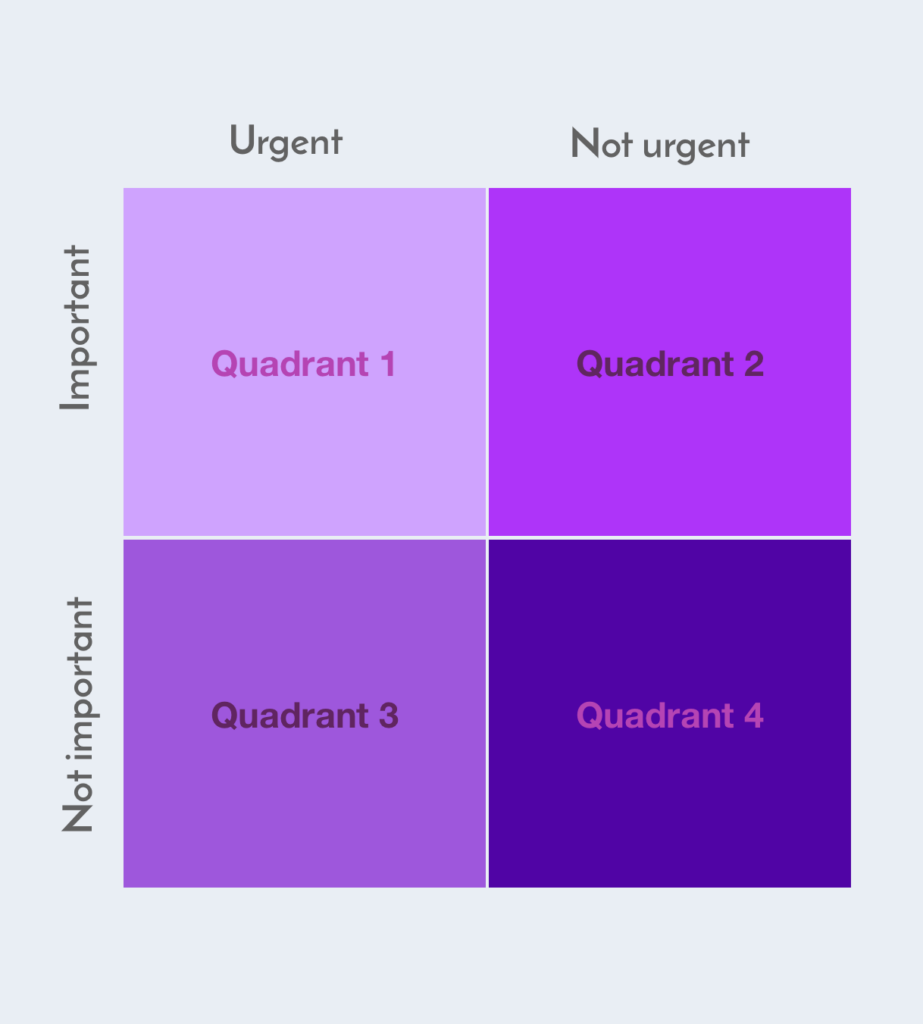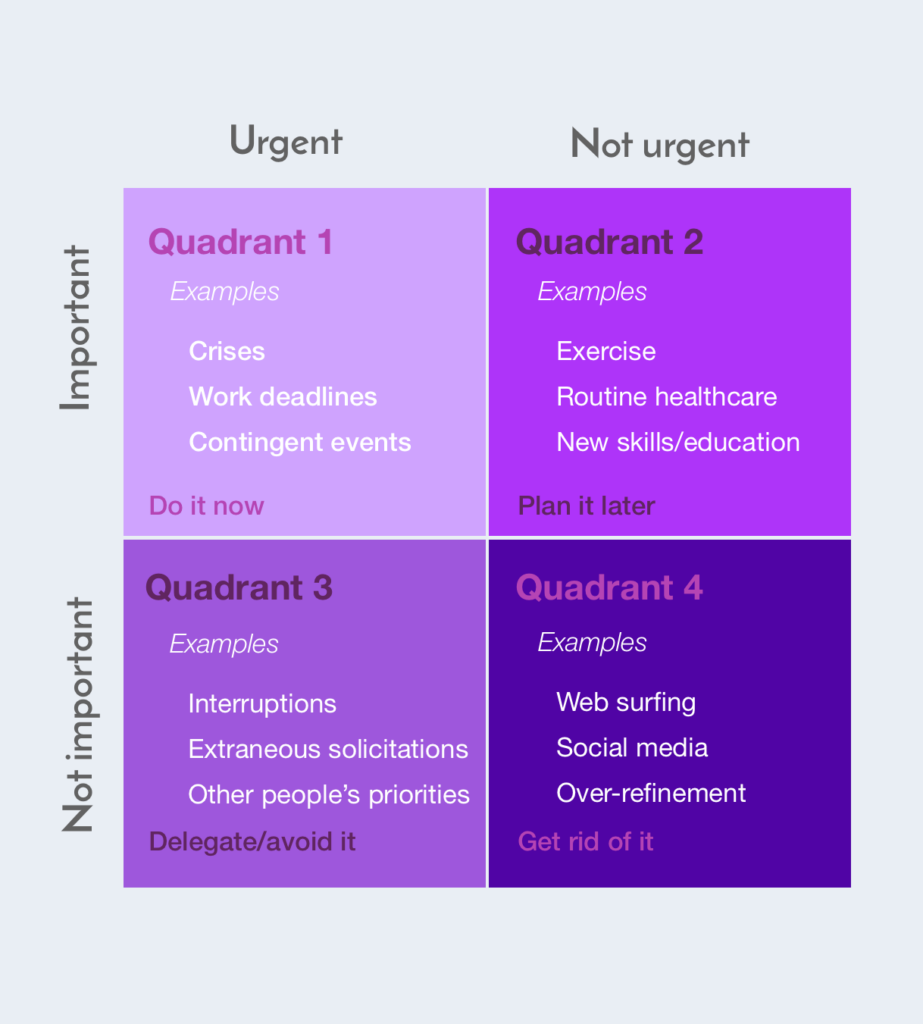Professionals make hundreds or thousands of choices every day. Most seem pressing but are ultimately inconsequential. Many carry great significance and urgency. The circumstances of your career determine how many decisions you are called upon to make, and the more complex your work, the more decisions you face.
One thing that seems pretty universal of work today is that there’s a lot going on all the time. Just look at a typical large-scale project. There are in-house team members from different departments and different offices. There are consultants and freelancers working locally or remotely. Team members may be in different countries speaking multiple languages. Communication takes place in-person and by phone, email, and video conferencing. Scheduling a meeting can require an advanced degree.
Much of our work these days shares this complexity. Which means that much of our work involves making decisions on everything from the inconsequential to the significant. The tricky part is learning how to make smart decisions quickly. Just think of your day at work yesterday. How many decisions would you guess you made? How much time did you spend deliberating on those decisions?
If your answers are something like “a lot” and “way too much,” read on.
Make decisions like a President
Dwight D. Eisenhower was a Five-Star General who led the Allied forces in Europe to victory in World War II, served as the first Supreme Commander of the newly formed NATO, and, in 1952, was elected President of the United States. It’s safe to assume that he kept himself pretty busy.
In 1954 he gave a convocation speech to Northwestern University in which he shared a piece of wisdom about time management: “I have two kinds of problems, the urgent and the important. The urgent are not important, and the important are never urgent.” This idea has been developed into a useful decision-making tool known as the Eisenhower Matrix, a framework for evaluating and prioritizing tasks. Its value lies in how it reminds us to be purposeful about our expenditure of scarce resources like time.

The Eisenhower Matrix offers another powerful insight: being busy is not the same as being productive. When our work days are defined by decision after decision, it is too easy to fall into the habit of thinking that because you are acting on multiple urgent requests, you are being productive and effective. As the Matrix will demonstrate, this isn’t always correct.
The Eisenhower Matrix, square by square
The Eisenhower Matrix prompts us to ask about every decision that lands on our real or virtual desks: Is this task important to my goals? And is it urgent? If it is just urgent, then perhaps it is time to shed some non-urgent, unimportant activities in order to focus on deeper strategic goals to put your scarce time to better use.
The Eisenhower Matrix is divided into quadrants comprising the possible combinations of two factors, the important/not important and the urgent/not urgent. Here’s how to determine what quadrant a new tasks belongs in, and what to do in response.

Quadrant 1: Important and urgent
Recommended action: Do it now
Tasks that fall into Quadrant 1 are both urgent and important. A colleague calls in sick on a project and you need to pitch in. A routine deadline has to be met (whether or not the project itself qualifies as important). Your child is sick and needs to be picked up from school. This combination of important and urgent means that you need to focus on these tasks immediately and complete them as quickly as possible.
The insight here is that you cannot control other people or the external environment, so you need to build redundancy into your processes to reduce the number of times unexpected events occur. The fewer items in Quadrant 1, the better.
Quadrant 2: Important but not urgent
Recommended action: Schedule it later
Quadrant 2 describes tasks that are inconsequential in the short run but important in the long term. This includes everything from exercise and visits to the dentist, to setting goals and engaging in self-reflection. These items should be prioritized behind Quadrant 1 tasks and scheduled for completion at a later date.
The important insight with Quadrant 2 is that these things need to be completed, just not immediately. You can set aside time for Quadrant 2 activities each day or week, but you shouldn’t put aside anything strategic (Quadrant 1) to get them done. Things that support your long-term success should be treated flexibly for short-term scheduling purposes.
Quadrant 3: Not important but urgent
Recommended action: Delegate or avoid it
Your work day is probably filled with Quadrant 3 tasks. These are the requests that carry urgency but that aren’t important to you or your mission. This latter part is the key to recognizing tasks that fall into this category; they’re urgent to someone but getting them done doesn’t contribute to your personal priorities. Tasks that seem urgent but are not of true strategic consequence include:
- Answering a ringing phone even though you can see the display says “Unknown Caller”
- Checking your device when you hear a new message notification even when you aren’t expecting an important message
- Helping someone who is asking for advice about something not related to your own deliverables
Quadrant 3 decisions have something in common: their urgency is created by someone else’s priorities. And when you allow these tasks to take priority over your own, you’re allowing someone else’s priorities to supersede your own. Which is often considerate but, when taken to the extreme, self-defeating. The problem is that it is hard to know when to say no, no matter how much you might need to.
There are two actions appropriate for Quadrant 3 distractions: avoid or delegate. Avoiding often comes down to resisting the temptation. Don’t answer the call, let it go to voicemail. Keep your smartphone out of reach or turned off. Keep your door closed when you’re trying to get urgent and important work done. You may also be in a position to delegate Quadrant 3 tasks. These tasks are, after all, important to someone so contributing to their completion can be beneficial. When appropriate, handing off these tasks to a colleague or assistant is a best-of-both-worlds solution.
Quadrant 4: Not important and not urgent
Recommended action: Get rid of it
Quadrant 4 activities are neither urgent nor important. They’re entirely under your direct control. This quadrant describes activities that are essentially recreational and optional. These are the things we do that we don’t need to, and the things that somehow end up eating productive time. Think browsing social media or pricing air fares for an exotic vacation in three years. Everyone needs a break now and again, but these are the things that start as 5-minute distractions and then turn into 50-minute time sinks. The best thing to do with tasks in this category is to avoid them in the first place.
Know your tools
As with any tool, understanding its capabilities and limitations is critical to using it successfully. The Eisenhower Matrix is not suitable for making highly complex or involved decisions. Think of it more as a first step in evaluating new tasks as they come up, whether during a meeting or when you’re reading an email. Getting into the habit of slotting a new task into its appropriate quadrant can speed up prioritization and improve decision making.
Before you know it, you’ll be making decisions like Ike.